Top Lab Grown Diamond Retailers to Consider
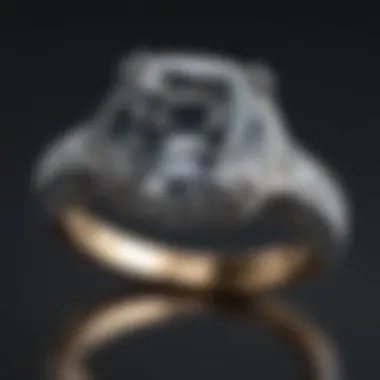
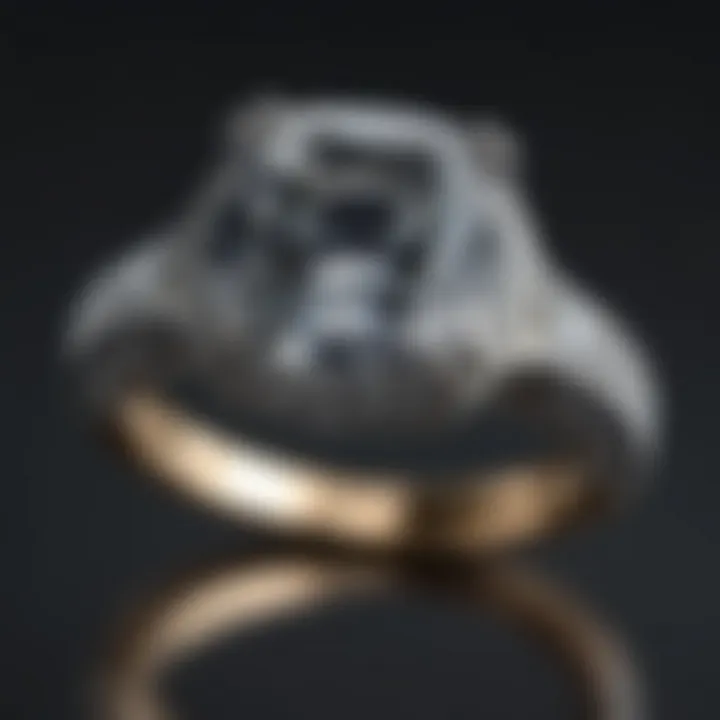
Intro
When you think about diamonds, what often comes to mind is luxury, durability, and perhaps even a touch of romance. However, the rise of lab grown diamonds is shaking up this age-old narrative. These gems, produced through advanced technological processes that replicate the natural conditions under which diamonds develop, are capturing hearts and minds across the globe. They reflect the craftsmanship of science, offering a more ethical, sustainable, and often more affordable alternative to their mined counterparts.
This guide dives deep into the best retailers specializing in lab grown diamonds, exploring what sets them apart in an increasingly crowded market. With unique offerings, their commitment to sustainability, and consumer satisfaction falling into the spotlight, discerning buyers can make informed choices without feeling overwhelmed by the plethora of options available.
By providing a comparative analysis of these retailers, we aim to illuminate their strengths and weaknesses. Whether you're an avid collector, a jewellery designer, or simply someone looking to purchase that perfect gem, this article will serve as a helpful compass in your quest for the right retail partner.
In the following sections, we will explore the characteristics that define lab grown diamonds, delve into the various properties of gemstones, and provide a detailed overview of the top retailers in this fascinating market.
Preface to Lab Grown Diamonds
In today’s rapidly evolving market of gemstones, lab grown diamonds have emerged as a remarkable alternative to their mined counterparts. This interest is not just a passing trend; it marks a substantial shift in consumer preferences that reflect broader ethical, environmental, and economic considerations. Lab grown diamonds offer a sparkling option that appeals to those who prioritize not only beauty but also integrity in their purchases.
Exploring lab grown diamonds allows gem enthusiasts to appreciate a sophisticated balance between luxury and responsibility. The manufactured origins of these diamonds open up discussions on resource management and social impact, shaping the decisions of modern consumers who seek more than just bling on their rings.
Defining Lab Grown Diamonds
Lab grown diamonds, also known as synthetic or cultured diamonds, are chemically and physically identical to natural diamonds. Their formation occurs in controlled environments using advanced technological processes. These diamonds are not mere imitations; they showcase the same brilliance and durability as their mined equivalents. The key difference lies in their inception. While natural diamonds take millions of years to form deep within the Earth, lab grown diamonds can be produced in a fraction of that time.
In essence, lab grown diamonds stand as a testament to human ingenuity, allowing consumers to own a piece of elegance without the heavy toll that traditional diamond mining exerts on both the environment and local communities.
The Technology Behind Creation
Two primary methods are used in the creation of lab grown diamonds: High Pressure High Temperature (HPHT) and Chemical Vapor Deposition (CVD). Each method simulates the natural diamond formation conditions, showcasing impressive technological prowess.
- High Pressure High Temperature (HPHT): This technique mimics the intense heat and pressure found in the Earth’s mantle. A small diamond seed is placed in a chamber filled with carbon, which is subjected to extreme temperatures (about 1,500 degrees Celsius) and pressures (up to 1.5 million pounds per square inch). This process can take from a few days to a couple weeks, yielding diamonds that possess natural qualities.
- Chemical Vapor Deposition (CVD): This method involves the use of carbon-rich gases, such as methane, to create diamond films. A diamond seed crystal is placed in a chamber, and the gases are ionized into plasma, allowing carbon atoms to deposit onto the surface of the seed. The process is a bit slower but enables larger diamond crystals to grow, making it popular among retailers.
The technology behind lab grown diamonds continues to evolve, providing even more options in quality and size without the ethical dilemmas associated with mined ones.
Comparison with Natural Diamonds
When it comes to selecting the right diamond, understanding the distinctions between lab grown and natural diamonds is vital. Below are some critical comparisons that can guide consumers in making informed choices:
- Cost: Typically, lab grown diamonds are significantly less expensive, often 20-40% cheaper than natural diamonds of similar size and quality. This price difference allows consumers to invest in larger stones or higher-quality diamonds within their budget.
- Source Transparency: With lab grown diamonds, buyers can trace their gems back to the initial production facility. Natural diamonds, on the other hand, may have complex supply chains that can obscure their origins.
- Value Retention: Natural diamonds have held a longstanding reputation for value retention, often becoming family heirlooms. While lab grown diamonds are gaining acceptance, their resale value tends to be lower.
Ultimately, the choice between lab grown and natural diamonds hinges on personal preference, values, and how one weighs the significance of each type. As consumers consider their individual needs, lab grown diamonds present a compelling case in favor of responsible living.
Benefits of Purchasing Lab Grown Diamonds
The world of diamonds has significantly changed in recent years, and with that comes a shift in perspectives around purchasing. Lab grown diamonds, often mistaken for their mined counterparts, provide a whole new facet — both literally and figuratively — to the diamond buying experience. Choosing lab grown diamonds can be a wise decision, particularly for consumers conscious of ethical practices, budgetary constraints, and environmental impacts. In this section, we will delve into these substantial benefits that persuades many to consider lab grown diamonds for their purchases.
Ethical Considerations
When you think about diamonds, the image of blood diamonds often comes to mind. These are diamonds mined in war zones and sold to finance armed conflict. Lab grown diamonds, however, present a refreshing alternative. They are created in controlled environments, ensuring that no human rights violations or unethical labor practices are involved in their production. For consumers who align their purchases with their values, this can be a pivotal factor.
- Lab grown diamonds are conflict-free.
- They come with guarantees regarding their source.
- The technology and processes used lag behind no longer than mining processes, ensuring transparency.
"Purchasing a lab grown diamond means supporting ethical practices in an industry that desperately needs reform."
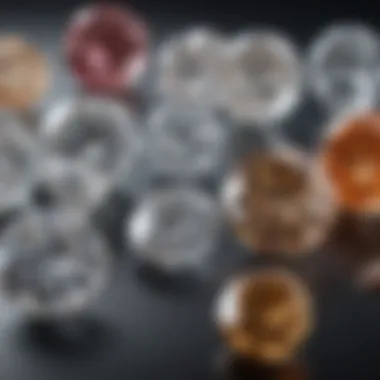
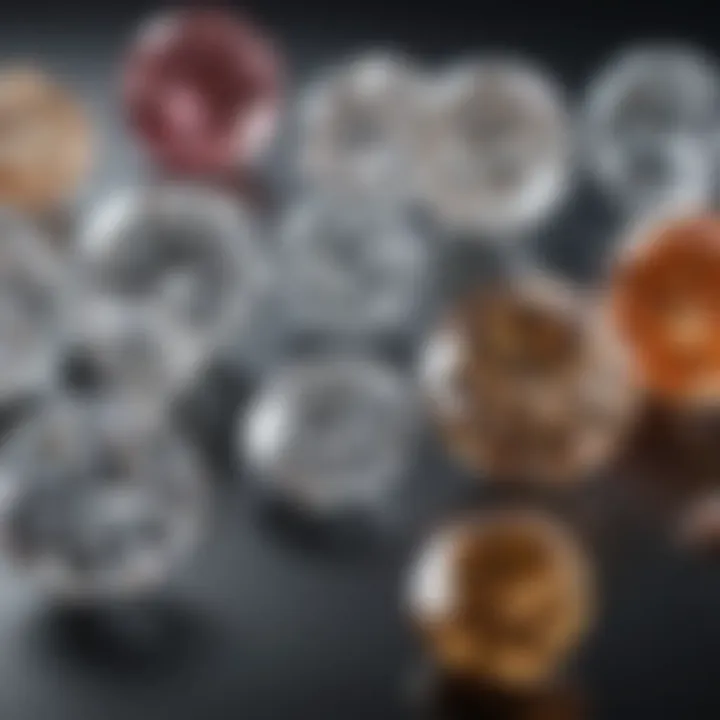
Affordability Factor
Another significant advantage that lab grown diamonds offer is the cost savings. Generally, these diamonds are available at a fraction of the price of their mined relatives. The key reason for this is the technology used to make them, which allows for faster and less expensive production. This price reduction does not come at the cost of quality, as lab grown diamonds exhibit the same physical and chemical properties as mined ones.
- Marketplace trends show lab grown diamonds can cost 20-40% less.
- Competitive pricing means buyers often can afford a larger or higher-quality stone.
- Many retailers provide flexible financing options for added consumer comfort.
Thinking about budgets? Lab grown diamonds may allow you to splurge on that stunning setting or perhaps add matching pieces that you couldn’t have considered before.
Environmental Impact
diamonds from traditional mines have a notorious reputation for causing environmental degradation. The methods needed to extract these stones can lead to deforestation, soil erosion, and habitat destruction. In contrast, lab grown diamonds are manufactured in highly efficient environments with minimal ecological footprints. Their production can utilize sustainable energy sources, which is a step closer to preserving our planet.
- Lab grown processes consume significantly less land.
- They may also reduce carbon emissions associated with traditional mining.
- Retailers of lab grown diamonds are increasingly adopting sustainable practices throughout their supply chains.
In summary, the benefits of purchasing lab grown diamonds come together to create a compelling narrative. They not only offer a more ethical choice but can also ease financial strains while being gentler on the environment. For gemstone enthusiasts, collectors, and anyone interested in making informed choices, lab grown diamonds present a modern, conscientious alternative.
Criteria for Selecting Retailers
When it comes to purchasing lab grown diamonds, understanding the criteria for selecting retailers can make all the difference. With an ever-growing market and numerous options, buyers need to navigate this landscape thoughtfully. Choosing a reputable retailer means ensuring that you’re not just buying a stone but investing in quality, service, and sustainability. This section outlines the key criteria that can guide you in your quest for the perfect diamond.
Reputation and Reviews
In today’s digital age, where information flows like water, a retailer’s reputation can often be gauged through online reviews and feedback. It’s crucial to delve into both customer reviews and expert testimonials. Reputable retailers typically showcase their strengths, but understanding what actual customers say can reveal deeper insights.
- Look for retailers with a strong online presence and positive feedback across platforms like Google Reviews, Yelp, or Trustpilot. Customers often share stories that highlight their experiences, from the buying process to customer service.
- Take note of how retailers respond to negative reviews. A proactive approach shows dedication to customer satisfaction.
- Consider social media buzz. Platforms like Reddit or Facebook may harbor honest discussions about various retailers, providing additional context that formal reviews might not cover.
"A retailer's reputation is like a mirror; it reflects the values they uphold and the experiences they create for customers."
Quality Assurance Practices
Quality assurance is non-negotiable in the diamond purchasing process. Buyers should look for retailers that employ rigorous quality control measures. This includes the certifications associated with lab grown diamonds, such as those from the Gemological Institute of America (GIA) or the International Gemological Institute (IGI).
- Certification: Diamonds backed by certification provide a guarantee of their quality. Retailers should be transparent about the grading processes and certifications they adhere to.
- Clarity of Practices: Consider retailers who openly communicate their quality assurance practices, be it through detailed descriptions of their grading process or accessible customer support to answer any questions.
- Return Procedures: A retailer that stands behind its product will have clear quality assurance protocols and a reasonable return policy, which we will discuss in the next subsection.
Return and Warranty Policies
An often-overlooked aspect of purchasing is the return and warranty policies. It’s essential to understand what options a retailer offers if the diamond doesn’t meet your expectations.
- Flexible Return Policy: Aim for retailers that provide a 30-day or more return window. This added flexibility allows customers to reassess their purchase without pressure.
- Warranty Information: Some retailers provide warranties on their jewelry, covering potential damage or defects. Familiarize yourself with the specifics of these warranties—what's covered, the duration, and any needed upkeep or checks.
- Clear Communication: Ensure the policies are stated clearly on the retailer's website. A lack of clarity or confusing terms can lead to frustration later.
Top Lab Grown Diamond Retailers
When diving into the world of lab grown diamonds, understanding the leading retailers is of utmost importance. These vendors do not merely sell stones; they represent a shift in consumer preferences, ethics, and trends in the diamond industry. Selecting the right retailer can make or break the experience, impacting not just your purchase but also your satisfaction with the product. A credible retailer assures quality, often comes with attractive guarantees, and often supports sustainability initiatives. Let's delve into the top players in this market.
Retailer A: Overview and Offerings
Retailer A has staked its claim as a titan in the realm of lab grown diamonds. Boasting a diverse array of offerings that include engagement rings, earrings, and custom designs, they seem to cover all bases. One notable aspect of their collection is the wide selection of cut styles available, which caters to various tastes. The quality of their diamonds is backed by a rigorous grading process, often verified by reputable gemological institutes. In their pursuit of excellence, they have engaged with expert gemologists, ensuring every stone meets stringent standards.
Retailer B: Unique Selling Points
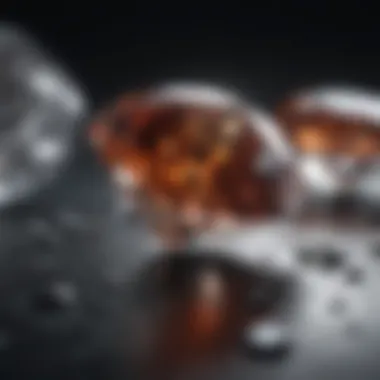
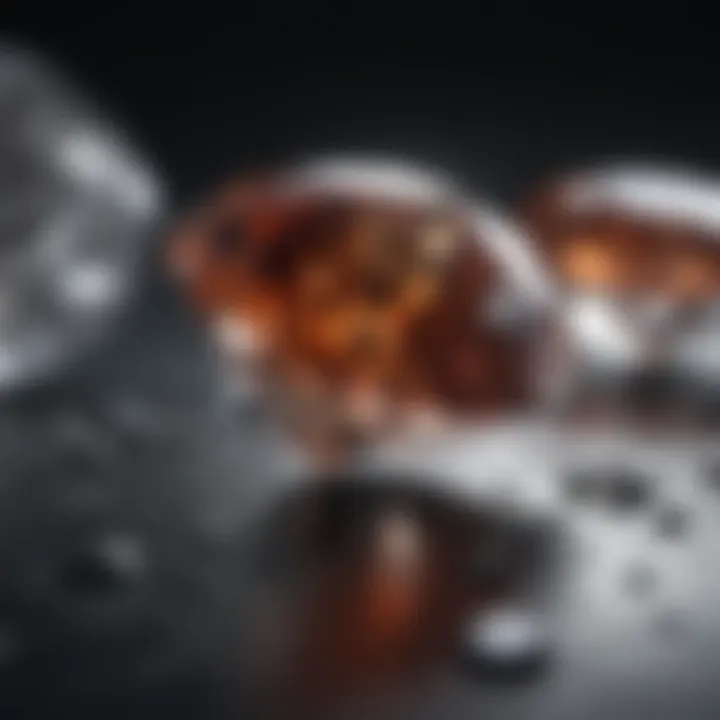
What sets Retailer B apart in this crowded marketplace? For starters, they focus on personalization. Customers can design their own rings, selecting everything from stone shape to the type of metal used in the settings. They pride themselves on leveraging modern technology that assists customers in visualizing their custom designs in real time. But it doesn't stop there; Retailer B also emphasizes educational content on their site. They provide comprehensive resources about diamonds, from the Four Cs (cut, color, clarity, and carat) to the specifics of lab-grown stone production. This commitment to empowering consumers through knowledge is a refreshing strategy.
Retailer C: Customer Experiences
Customer experiences at Retailer C paint a positive picture. Many reviews highlight the warm, personalized service that goes beyond the sale. Shoppers have communicated their satisfaction with prompt responses to inquiries and the attentiveness of sales staff. Those who shared their stories often note how Retailer C offered guidance throughout the buying process.
Moreover, this retailer encourages customers to share their unique engagement stories and experiences, further fostering a tight-knit community. Feedback also emphasizes the excellent quality of their diamonds, often comparing them favorably with natural stones.
Retailer D: Industry Recognition
Retailer D comes with a reputable pedigree, having garnered multiple awards from both industry and consumer-focused organizations. Their commitment to innovation and eco-friendliness has made them a favorite, not just among shoppers but also among industry insiders.
They have collaborated with environmental groups to plant trees for every jewelry sold, making their brand synonymous with sustainability. Such recognition elevates their credibility and aligns well with the growing consumer demand for ethically sourced options.
Retailer E: Pricing and Promotions
Retailer E stands out for its competitive pricing strategy. They offer various promotions, making lab grown diamonds more accessible to a wider audience. Their regular clearance sales and seasonal discounts often attract savvy shoppers looking to snag a deal without compromising on quality. The transparency in their pricing structure also deserves mention. With clear breakdowns of costs, customers can easily see what they are paying for, fostering trust in the buying process. In addition, many engagement rings come with loyalty rewards that allow customers to save on future purchases, a feature that is quite appealing.
"Selecting the right retailer can demystify the process of buying lab grown diamonds, enhancing the overall experience."
Sustainable Practices in the Diamond Industry
Sustainable practices hold a critical significance in the diamond industry, particularly as consumers continue to become more aware of the environmental and ethical implications of their purchases. With a keen focus on responsibility, retailers specializing in lab grown diamonds are now setting benchmarks for sustainability that others in the industry strive to meet. By adopting greener methods and ethical practices, these companies are not merely keeping up with consumer demands; they are reshaping the entire landscape of the diamond market.
Lab Grown vs. Mined Diamonds
When pitting lab grown diamonds against their mined counterparts, the differences extend beyond mere beauty; they encapsulate ethical considerations and environmental impact as well. Lab grown diamonds are fashioned in controlled environments using advanced technology, most commonly through High Pressure High Temperature (HPHT) or Chemical Vapor Deposition (CVD) methods. This not only assures the customers of its ethical standing but also guarantees a significantly lesser carbon footprint.
The extraction of mined diamonds, by contrast, often involves methods that can devastate local ecosystems. The consequences are dire: deforestation, pollution of land and water, and adverse effects on wildlife. Additionally, many traditional diamond mines operate in regions beset by conflict, leading to a horrible history of human rights abuses, often referred to as blood diamonds. Consumers nowadays look to make choices that align with values of integrity and sustainability. Thus, the advantages of lab grown diamonds—not just aesthetically but ethically—become crystal clear.
"Choosing lab grown diamonds means supporting an industry that prioritizes ethical responsibility and environmental stewardship."
The fine line between lab grown and mined diamonds continues to blur as technology progresses, making lab grown gems not only a viable alternative but a preferred choice for many conscientious buyers.
Impact on Communities
The impact of diamond activities stretches far and wide, often rippling through communities and ecosystems. In the case of mined diamonds, communities living near mining operations have suffered immensely. Often, local populations face displacement, receive minimal economic benefits, and endure environmental degradation that compromises their health and livelihoods. This troubling reality confronts those involved in the diamond trade with a moral dilemma as they seek to balance profit with social impact.
Conversely, lab grown diamonds bring opportunities without the negative consequences associated with mining. The establishment of facilities for lab grown diamond production can generate local jobs with better labor standards and wages. Furthermore, companies engaged in this ethical practice frequently contribute to community development initiatives, offering education, healthcare, and other essential services. This wave of positive change can have ripple effects, leading to long-term benefits for communities previously overlooked in the traditional diamond supply chain.
Ultimately, focusing on sustainable practices is more than just a trend; it represents a collective shift towards ensuring that all stakeholders—consumers, communities, and the planet—benefit from the diamond industry.
Custom Engagement Options
Choosing the right engagement ring is more than just picking a stone; it involves a personal journey of creativity and emotion. Custom engagement options offer couples the chance to design rings that have deep personal meaning, going beyond the traditional designs found in most jewelry stores. In a world where individuality is celebrated, lab grown diamond retailers are increasingly providing custom options that appeal to discerning buyers, ensuring that every ring tells a unique story.
Designing Unique Pieces
Creating a custom engagement ring is akin to crafting a love story—every detail matters. When couples opt for custom designs, they can select not only the type of diamond but also the style of the setting, ensuring that the final product reflects their unique personalities.
- Personalization: With custom rings, every feature can mirror the relationship’s journey. Whether it’s a certain cut of diamond that recalls a shared memory or a setting that resonates with significant moments, such attention to detail can make the ring uniquely meaningful.
- Design Collaboration: Many retailers that specialize in lab grown diamonds collaborate closely with their clients. A common approach is to sketch preliminary designs, allowing couples to iterate on their vision before arriving at a final product. This collaborative process infuses the ring with a sense of ownership and intimacy.
- Tailored Aesthetics: From vintage-inspired pieces to modern styles, the aesthetic choices are virtually limitless. Couples can mix and match elements until they find a design that clicks. For instance, combining a round lab grown diamond with a textured band can create a contemporary look that stands out.
"A custom ring is like an artwork; it reflects the artist's (couple's) experience and creativity."


Setting Options Available
The setting of an engagement ring is just as crucial as the diamond itself, and it offers another layer of customization. Different settings can dramatically alter the appearance of the ring, changing how the diamond sparkles and shines. Here are some popular settings offered by lab grown diamond retailers:
- Solitaire: A classic setting that showcases a single diamond. This style often symbolizes simplicity and elegance, allowing the diamond to take center stage.
- Halo: This is a setting that features a central diamond encircled by smaller diamonds. It enhances the perceived size and brilliance of the center stone, making it a popular choice for those looking for a little extra sparkle.
- Three-Stone: Representing the past, present, and future, this setting incorporates two additional diamonds beside the central stone. It can symbolize a couple's shared journey and future aspirations.
- Pavé: In a pavé setting, tiny diamonds are set closely together, coating the band with brilliance. It creates a luxurious look and can complement the central diamond beautifully.
- Bezel: A setting that encases the diamond entirely or partially in metal, providing security and a modern touch. It’s perfect for an active lifestyle, where durability is prioritized.
Custom engagement options signify a step beyond mass-market jewelry; they embody partnership, shared vision, and personalized artistry in every piece. By leveraging the flexibility of lab grown diamonds, couples can craft engagement rings that resonate with their values and love story, making every glance at the ring a reminder of their commitment.
With thoughtful design and careful consideration, buyers can navigate their options and explore the myriad possibilities while ensuring that their choice is as unique as their bond.
Customer Education and Resources
In the realm of lab grown diamonds, understanding what you’re purchasing is crucial. This section emphasizes the importance of customer education, shedding light on diamond grading and why it matters in your buying journey. Knowledge empowers consumers to make informed decisions, equipping them with the ability to differentiate between quality options and potential pitfalls.
Understanding Diamond Grading
Diamond grading is the process through which diamonds are evaluated based on specific criteria, known as the "Four Cs": Cut, Color, Clarity, and Carat Weight. Each of these factors plays a significant role in determining the overall value and visual appeal of a diamond.
- Cut: This speaks to how well a diamond has been shaped and polished. A good cut enhances the stone's brilliance and sparkle.
- Color: This refers to the presence of color in a diamond; the less color, the more valuable the diamond is. Diamonds are graded from D (colorless) to Z (light yellow or brown).
- Clarity: This evaluates the presence of inclusions and blemishes. The fewer flaws present, the higher the clarity grade.
- Carat Weight: This measures the weight of the diamond. Larger diamonds are rarer and often more expensive.
Grading affects not only the price but also the beauty of the stone. For those in the market for a diamond, understanding these grades can mean the difference between settling for a mediocre stone or investing in a high-quality gem.
"Knowledge is power, and in the diamond market, it translates to value."
Resources for Further Learning
There are numerous avenues for consumers to expand their knowledge regarding lab grown diamonds. Utilizing reputable sources can help demystify the often complex world of gemology. Here are some valuable resources:
- Books: Titles focusing on gemology and diamonds can offer deep insight. Books like "Diamonds 101" provide a comprehensive look at the diamond industry.
- Websites: Websites like Britannica and Wikipedia host numerous articles on diamond types, grading systems, and industry practices.
- Forums: Platforms such as Reddit have communities dedicated to discussing lab grown diamonds, where enthusiasts share their experiences and recommendations.
- YouTube: Video tutorials can make learning about diamond grading more accessible and engaging. Many gemologists provide visual examples explaining each of the Four Cs.
By leveraging these resources, potential buyers can educate themselves, ask the right questions, and recognize value in their purchases. Being well-informed not only enhances the shopping experience but also ensures satisfaction in choosing the perfect gem.
The End: Making an Informed Decision
Making a well-considered choice in purchasing lab grown diamonds is not just about picking a sparkling stone. It's about digging deep into what matters personally. The significance of this topic is underscored in the article, as it melds together ethical quandaries, sustainability practices, and the very fabric of personal values. Understanding these elements can lead to a decision that feels right rather than just satisfactory.
The journey you've undertaken through this guide offers a lens to assess your priorities. Are you leaning towards affordability without compromising on quality? Or perhaps the ethical implications weigh heavily on your heart? Each retailer and their different practices present unique options to explore, allowing for a decision that resonates most with one's ethos.
Reflecting on Individual Values
In the end, it comes down to personal values. A few questions might help steer this reflection:
- How crucial is sustainability to you?
- Does supporting ethical practices drive your purchasing choices?
- Are you looking for something truly unique or simply a classic design?
Understanding what one stands for can significantly impact the final decision. Lab grown diamonds offer an array of choices that align with various personal beliefs. For instance, a buyer passionate about the environment might favor retailers that utilize renewable energy in their production process.
People should feel comfortable in their paths and understand that choosing a lab grown diamond often stands for more than just a piece of jewelry. It's a statement regarding one's values, guiding future generations toward more ethical choices.
Final Thoughts on Lab Grown Diamonds
As the curtain falls on this article, it’s essential to ponder the broader implications of choosing lab grown diamonds. These gems, formed using advanced technology, provide a more accessible, ethical alternative to their mined counterparts. They spark conversations about value ��— both economically and morally.
When you decide to purchase a lab grown diamond, you’re not merely buying an accessory. You are making a conscious choice that supports a burgeoning industry aiming to reshape conventional jewelry supply chains.
In summary, reflecting on individual needs and values in conjunction with the insights gleaned from this guide will reinforce your decision-making process. It’s crucial to navigate the choices available with clarity and confidence, ultimately leading to a satisfying purchase experience. With all the knowledge at your fingertips, the path toward selecting the right lab grown diamond is illuminated, allowing for an informed decision rooted in transparency and personal affinity.



